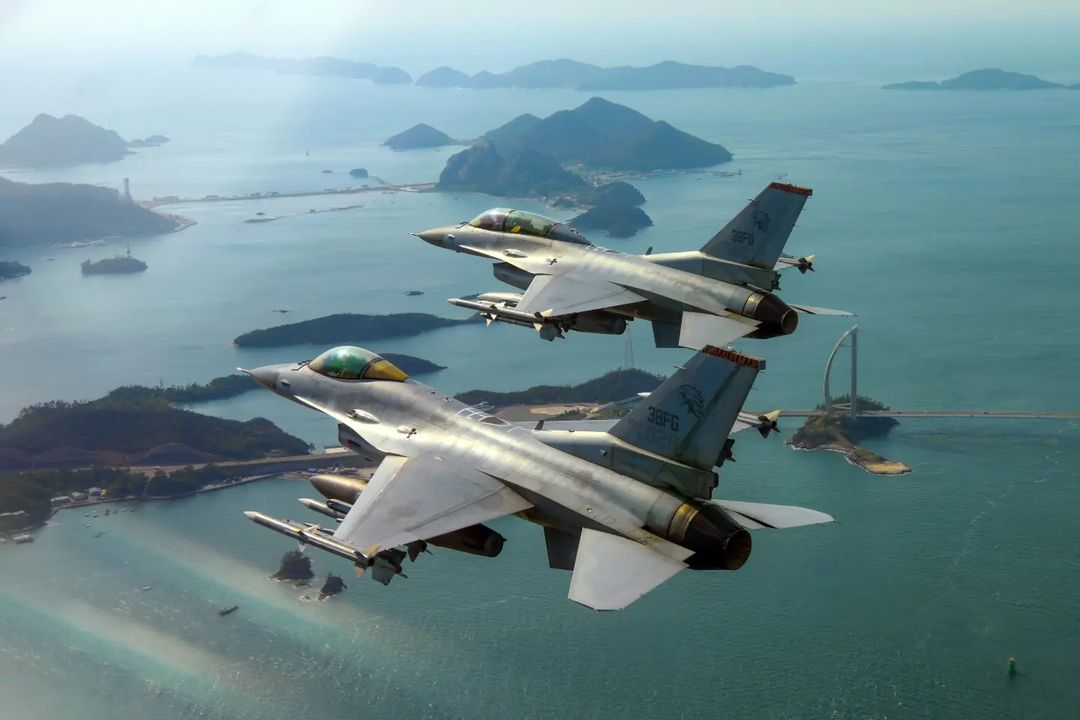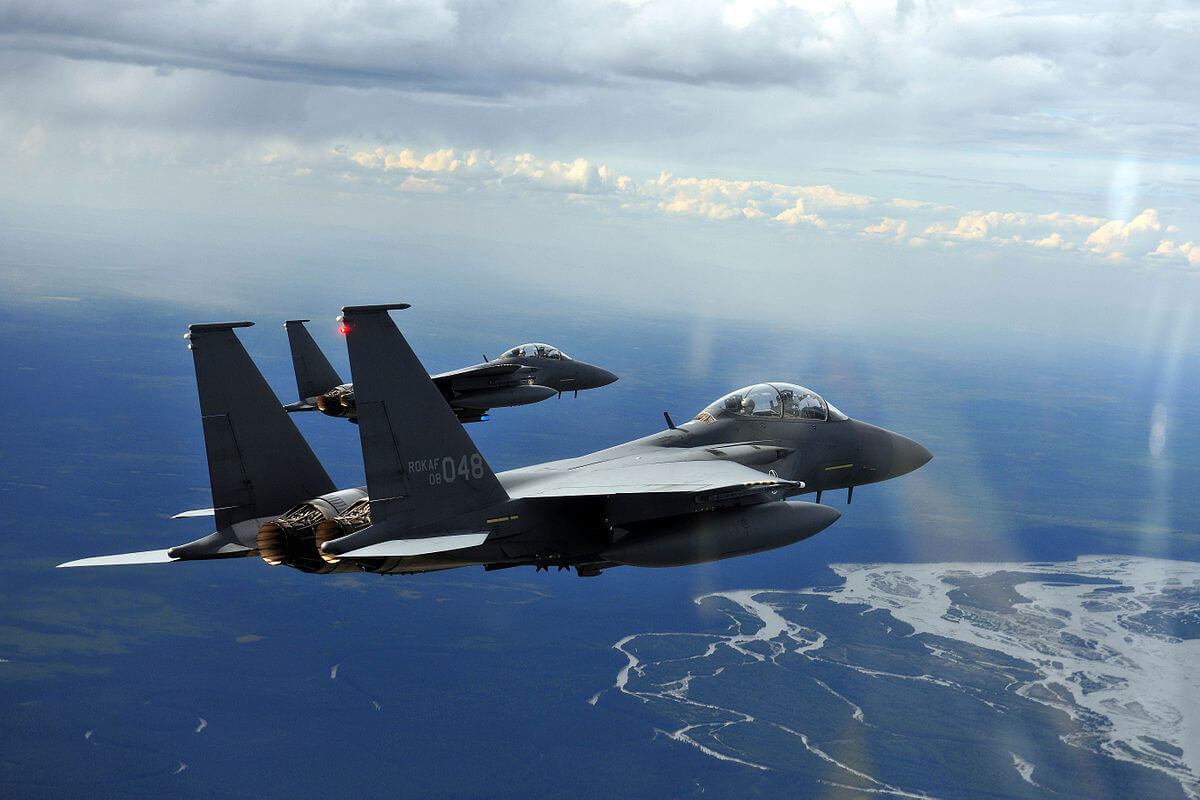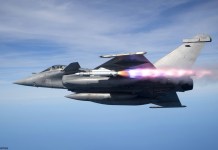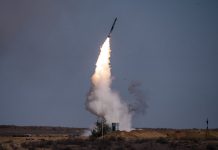On January 31, a South Korean KF-16 multi-role fighter aircraft accidentally fired a flare while in flight, prompting the country’s Air Force to investigate the incident, reported South Korea-based Hankyoreh daily.
US Again Scrambles F-22 Raptors To Intercept ‘Chinese’ Spy Balloon; Comes After Hawaii Incident Last February
The misfire happened on the same day when Lee Jong-sup, the South Korean defense minister, and Lloyd Austin, the US defense secretary, met in Seoul’s Yongsan Defense Ministry building.
“At around 1200 hours on January 31, a flare was unintentionally fired from a KF-16 that was returning to Seosan Air Base after completing its mission,” said the report, citing an Air Force official.
“The flare launched free-fell and combusted normally,” an Air Force official noted.
Flares are a crucial countermeasure to deceive adversary heat-seeking missiles. Flares are commonly made of pyrotechnic material based on magnesium or another high-burning metal, with a burning temperature at least as hot as engine exhaust.

The intention is to direct the infrared-guided missile to look for the flare’s heat signature instead of the heat signature of the aircraft’s engines.
According to many South Korean media outlets, the flare launch was not planned initially, and the pilot accidentally touched a flare launcher on board.
The military is allegedly looking into the exact circumstances of the mishap.
With more than 150 aircraft, the KF-16 serves as the backbone of the South Korean Air Force. Under a $1.2 billion agreement struck in 2016 with Lockheed Martin, the aircraft maker, the 134 fighters are being modernized to the Block 70 standard.
The KF-16 was developed in the 1990s as an F-16C/D variant produced locally by Samsung Aerospace, which was later absorbed by KAI (Korea Aerospace Industries) and tailored to the nation’s requirements.
The ROKAF also has F-35 Lightning II, F-15K Slam Eagle, F-5E Tiger II, and F-4E Phantom II fighters in addition to the F-16s.
Furthermore, the nation is spending billions on the development of the KAI KF-21 Boramae, which will replace the McDonnell Douglas F-4 Phantom II and Northrop F-5 E/F Tiger starting in 2026.
Past Incidents
The most recent event is the latest in a line of disasters involving the South Korean air force that illustrate its operational flaws.
On November 2, 2022, a KF-16 fighter that had been activated in response to a North Korean missile launch attempted to unleash two precision-guided missiles, but one failed to launch.
Following that, an F-15K fighter fired a long-range air-to-surface missile, but that launch also failed due to technical issues.
On December 26, a KA-1 light attack aircraft crashed as it was taking off for a mission to shoot down North Korean drones that had infiltrated the country’s air space.
A month earlier, in November 2022, a South Korean KF-16C fighter plane crashed due to an “engine abnormality” while on a mission, but the pilot was able to escape without injury.
The incident led the Air Force to ground all aircraft except those used for emergency and surveillance missions. KF-16 warplanes were kept off the air until the accident’s cause was established.

Later, the service concluded its inquiry by stating that a missing nut caused the aircraft crash on an engine component. But the part had been missing for 12 years owing to a maintenance mistake failure.
The nut in question was fastened to the fuel pump drive shaft of the jet. The severe shaft vibration without the component led to an exceptionally rapid gear wear out. Eventually, the fuel supply to the Pratt & Whitney F100-PW-229 engine was cut off.
Later, the Republic of Korea Air Force (ROKAF) examined over 200 engines, including those of the F-15K Slam Eagle aircraft, to rule out similar issues. The incident brought attention to the problems the nation’s air force is having with its air assets regarding maintenance and repair.
In April 2022, two KT-1 trainer aircraft of the South Korean air force collided mid-air during training, crashing into a mountain in the city of Sacheon in the country’s southeast.
In January 2022, a South Korean air force pilot was killed when his F-5E fighter jet crashed on a mountain south of Seoul, reportedly due to engine failure.
A dozen F-5s had crashed in South Korea since 2000, including two aircraft that crashed in 2010 and killed three pilots when they collided with a mountain on the country’s east coast.
- Contact the author at ashishmichel(at)gmail.com
- Follow EurAsian Times on Google News




